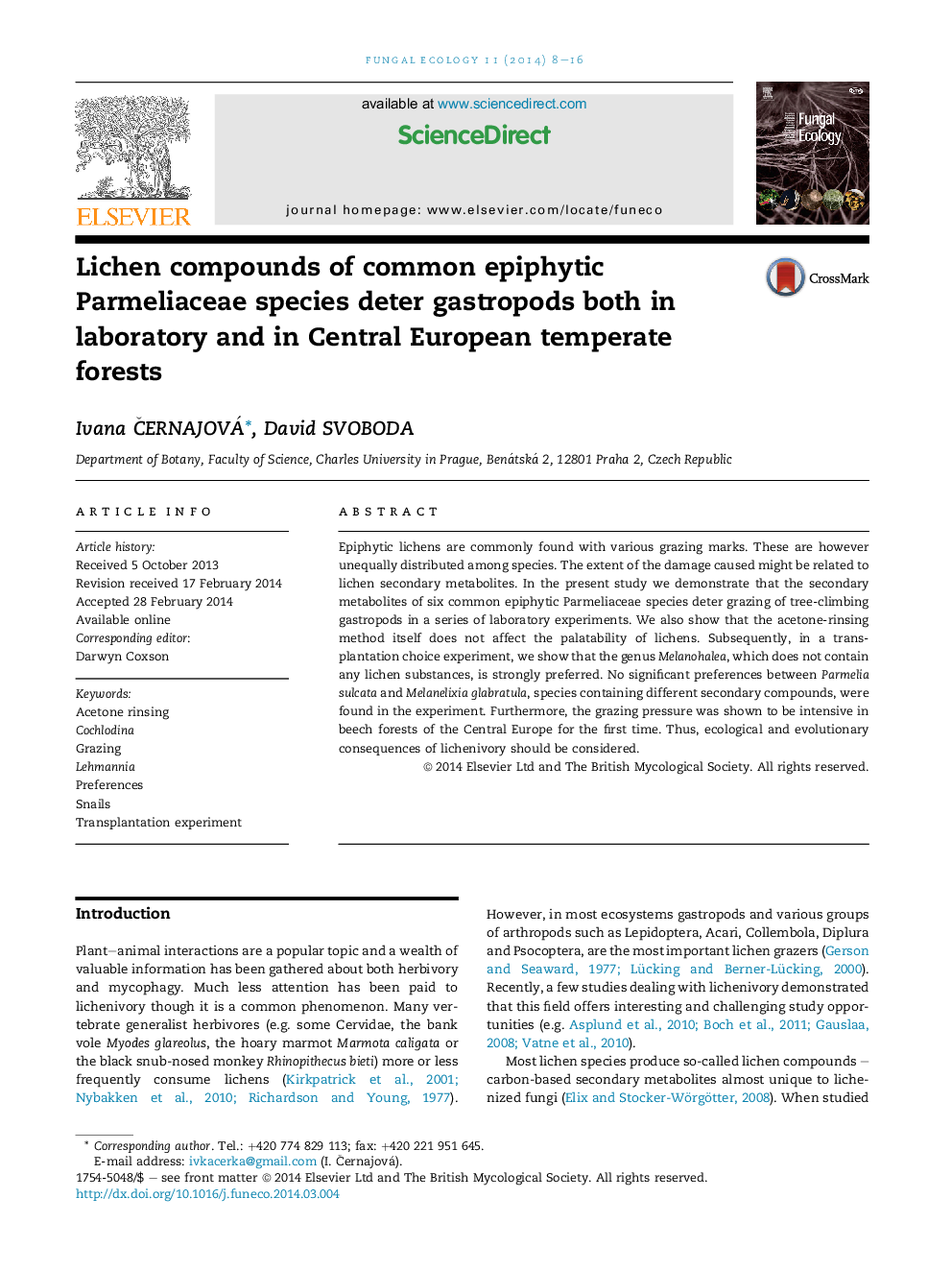| Article ID | Journal | Published Year | Pages | File Type |
|---|---|---|---|---|
| 8384619 | Fungal Ecology | 2014 | 9 Pages |
Abstract
Epiphytic lichens are commonly found with various grazing marks. These are however unequally distributed among species. The extent of the damage caused might be related to lichen secondary metabolites. In the present study we demonstrate that the secondary metabolites of six common epiphytic Parmeliaceae species deter grazing of tree-climbing gastropods in a series of laboratory experiments. We also show that the acetone-rinsing method itself does not affect the palatability of lichens. Subsequently, in a transplantation choice experiment, we show that the genus Melanohalea, which does not contain any lichen substances, is strongly preferred. No significant preferences between Parmelia sulcata and Melanelixia glabratula, species containing different secondary compounds, were found in the experiment. Furthermore, the grazing pressure was shown to be intensive in beech forests of the Central Europe for the first time. Thus, ecological and evolutionary consequences of lichenivory should be considered.
Related Topics
Life Sciences
Agricultural and Biological Sciences
Ecology, Evolution, Behavior and Systematics
Authors
Ivana Äernajová, David Svoboda,
